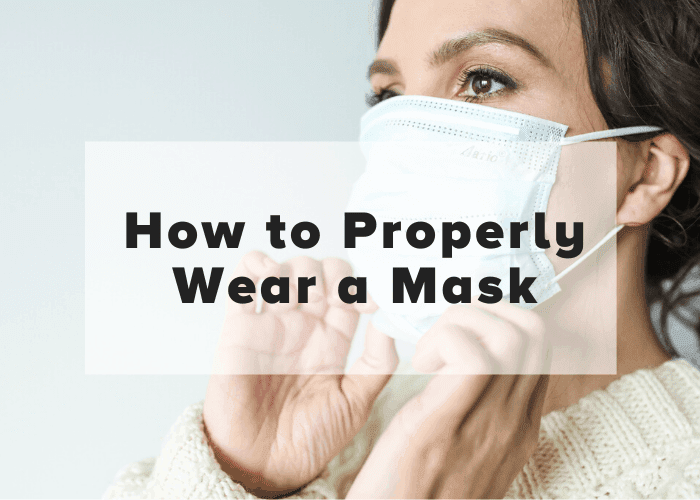Hi, this is Dr. Emily Parke. I just wanted to take a quick minute to shoot a video on how to properly wear a mask. Obviously there’s a lot of places that have been asking patients to wear masks. When you come in to a doctor’s office, if you are going in for a visit or even just at the grocery store, or anywhere in public, a lot of places are now requiring that people wear masks. So here’s what I’ve been observing when I’m out in public watching other people with masks. So first of all I’m going to demonstrate a couple of different masks.
So here’s one that’s more like a homemade type one and it has just loops on the ends that go on the ears and a portion that covers the face. So when you put this on, you ideally want to make sure that it’s covering at least the bridge of the nose and then it comes below the chin. Now an ideal fit would be to make this and have this be a little bit tighter. But these masks aren’t fit for every single face, but this is pretty good. It gives me pretty good face coverage. So this is one type of mask.
Now the other type of mask that you’re going to see a lot of are the medical masks, the surgical masks. So they look like this and they have pleats and then they also have ear loops. So when you put this one on, so you put it on loose, go behind the ears. The next thing you should do is you should be pinching the bridge of the nose because it has a metallic strip in there so you can fit it to your nose. And then the next step is to undo the accordion a little bit to cover the bottom of your chin. So this is more of an ideal mask fit.
What I’ve been seeing a lot in public unfortunately is people are wearing masks below their nose, not helpful, or people are wearing masks that have… They’re very loose on the bottom. So if you want to get the maximum benefit out of wearing your mask, you want to make sure it has a nice, tighter fit around the bridge of the nose and then it covers at least below your chin.
Now the masks, as I talked about even in my videos in March, the purpose of the mask is to help prevent the spread. If you as the asymptomatic person cough or sneeze, you’re preventing your droplets from spreading really far. As we know, a sneeze or cough can go up to six to 10 feet, 10 feet if it’s a really strong sneeze. So you as the healthy person who may be an asymptomatic carrier, you’re basically doing a public courtesy in wearing a mask.
Now will wearing a mask prevent you from actually getting, some type of illness, whether it’s COVID-19 or an influenza, another type of droplet spread illness? We really don’t know the hard data on that. Possibly, right? Because it does provide just a little bit of barrier protection. But really I would look at it like doing a service to the public, just making sure that you’re not contributing to the spread. So I hope that this helps kind of clear up how to properly wear a mask. This is Dr. Emily Parke.









